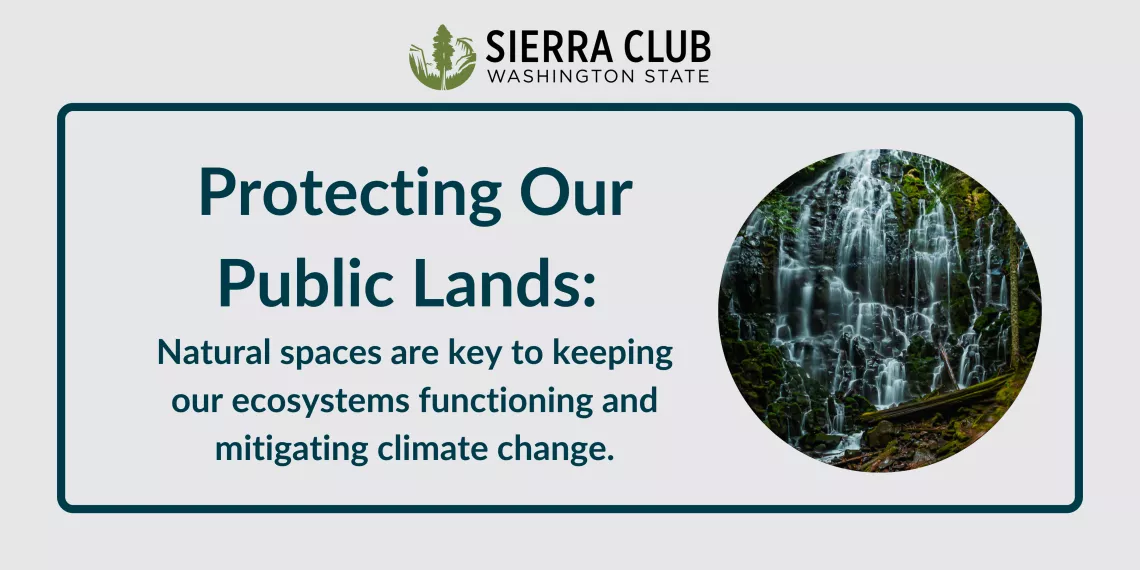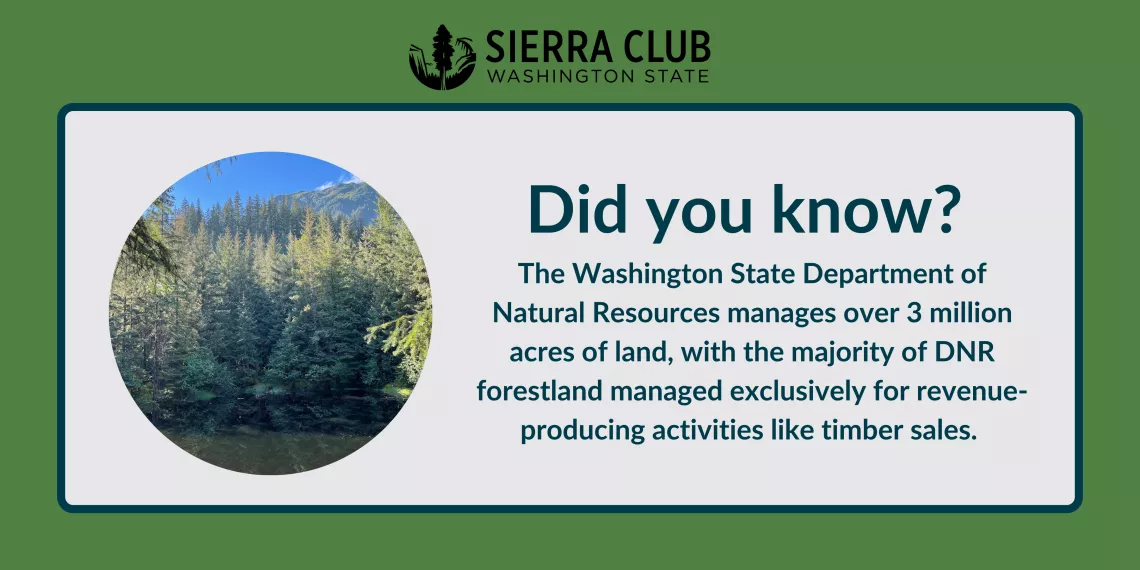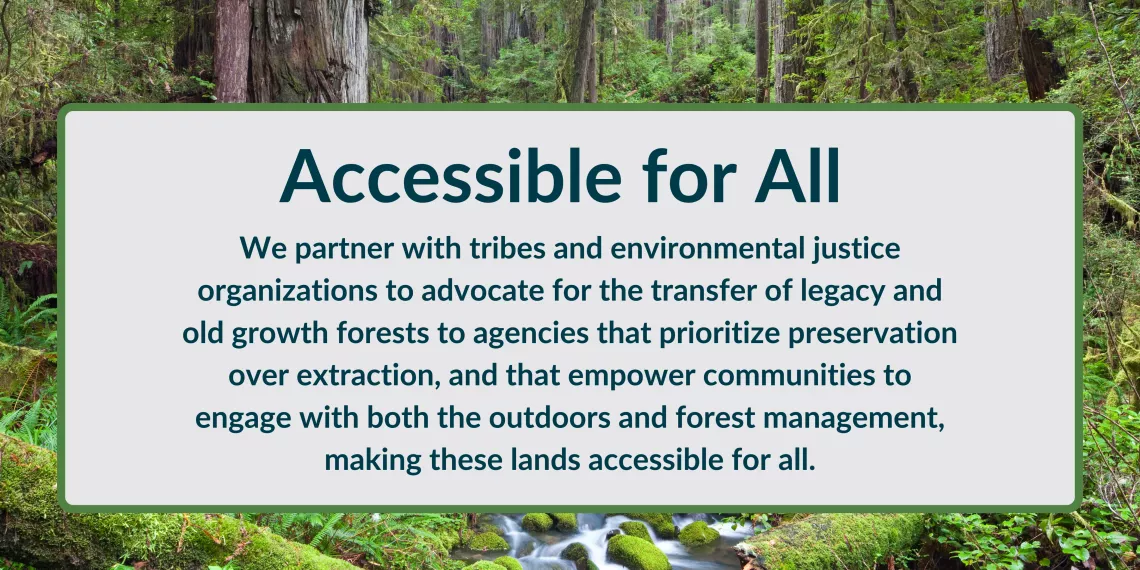
Preserving public lands and natural spaces is a fundamental key to keeping our ecosystems functioning and mitigating climate change. These spaces purify our air by storing and removing carbon from the atmosphere (sequestration) and filter our drinking water through layers of soil, sand, rock, and other natural materials. Public lands are integral to preserving biodiversity and supporting our planet as we know it.
To stem the rapid loss of America’s natural places and wildlife, and preserve important ecosystem benefits like carbon sequestration, it is imperative that more land and ocean habitat be set aside from human impact. The Sierra Club’s Thirty by Thirty campaign aims to protect thirty percent of US lands and thirty percent of ocean areas by the year 2030.
In Washington State, the Department of Natural Resources (DNR) manages over 3 million acres of non-aquatic land, and the majority of DNR forestland is managed exclusively for revenue-producing activities like logging.
Public lands - from our greenspaces, to our iconic Pacific Northwest landscapes - are unifying spaces that provide valuable cultural heritage and outdoor access opportunities. And as we've learned since the start of the COVID-19 pandemic, outdoor access is increasingly essential for our health.
Scientists at Oregon State University found that by simply leaving northwest’s forests uncut, the same amount of carbon can be kept out of the air as halting eight years’ worth of fossil fuel burning in the contiguous USA.

Despite these benefits, public lands controlled by state agencies aren’t safe from unsustainable logging and clear-cuts. That’s why we are doubling down on our work to increase protections for public lands, with a goal of protecting the remaining old growth and legacy forests in DNR land by 2030. Meeting this benchmark will call for creative thinking and collaboration to secure protective measures that are both tenable and focus on managing land for public benefits.
We will meet our goal of sustainable alternatives to clearcut logging practices by partnering with tribes and environmental justice organizations to transfer key landscapes such as legacy and old growth forests to agencies that prioritize preservation over extraction, while separating our public school funding from timber sales, and empowering communities to engage with the outdoors and forest management to make these lands accessible for all.
One of our main priorities is to ensure that the Trust Land Transfer program, one of the few existing tools within DNR, is fully funded by the state legislature. This includes the transfer of 10 projects across the state into protected management.
